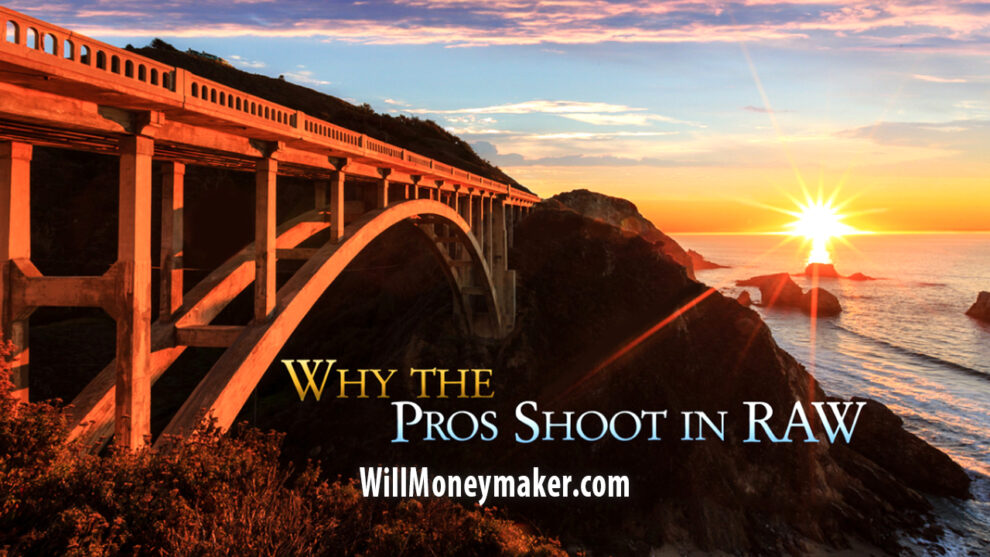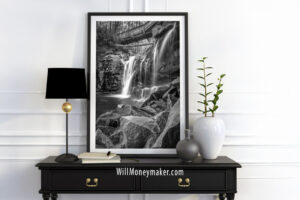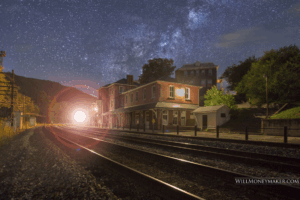You've heard it before: Whenever possible, always create RAW files rather than JPEGs. The reason given is that camera RAWs give you much more data to work with, which in turn means that you can do a lot more in the digital darkroom. The same is true if you look back at film photography. One of the reasons that JPEGs and digital images were so exciting to the first digital photographers is that you can do so much more with a JPEG than with film.
To put it all into perspective, I'll show you some of the limits that early film photographers have to work with. You'll also see how RAW files represent a leap in technology at least as great as the leap from film to digital.
The Early Days
Today, to access our “negatives,” all we need to do is plug the camera or the memory card into a computer to download the stored image files. If you carry a laptop with you or you happen to be shooting in a studio, you’re never more than a moment away from being able to edit your images.
However, in the early days, long before digital cameras were ever conceived, film development was the only way to access the images that you had created. This time-consuming endeavor required you to chemically process your film into negatives so that you could later use them to edit and print photos. It also required a darkroom full of equipment, or for the photographers on the go, such as Timothy O’Sullivan, a horse-drawn wagon that was converted into a mobile darkroom. Quite a far cry from today’s digital darkroom, which consists of a desktop or laptop with image editing software!
When it came to the actual editing process, photographers were very limited as to the things that they could do. For instance, many of the effects that we know and love today – like lens flares or black and white conversions – were either impossible to accomplish or extraordinarily difficult to reproduce after the image was taken. Black and white images required you to use black and white film, and rather than adding a lens flare during post-processing, photographers had to judge their lighting carefully and hope that their judgment calls produced the desired effect on film.
Once in the darkroom, however, photographers could do simple things, like dodge and burn their images. To do this, photographers had to use their hands or cardboard cutouts to shade parts of their prints as they were being developed. This was something of a trial-and-error process. If the print didn't come out just right the first time, there was no “Undo” button. Instead, photographers had to use their negatives to expose a new print and start the dodging and burning process over.
Along Came JPEGs
The digital revolution changed more than the way we take photographs. It also revolutionized the way we process them. Dodging and burning, color corrections, brightness, and contrast adjustments and more are now a matter of a few simple clicks – not hours spent in the darkroom working with expensive equipment, light-sensitive papers, and chemicals.
The digital darkroom also gave us a whole host of tools that those early photographers would never have thought possible. Photographers soon found that they could endlessly tweak colors, contrast and all the rest without wasting money on a photographic print. Moreover, we suddenly had the ability to add or remove objects as we pleased without carefully cutting – and potentially ruining – the negatives. If your image of an otherwise clear sky had one stray cloud, you JPEGs and editing software let you edit that cloud out or add a few more depending on your final vision for the image.
Even more remarkably, the advent of digital photography and JPEGs also meant that photographers no longer had to worry about film speeds, black and white versus color films, and the different chemical processes required to develop the different types of film. Now, instead of changing film speeds, we simply adjust the camera’s ISO setting. There is no need to shoot in black and white because any color image can be converted to black and white in seconds. The various developing processes were replaced with editing tools like Photoshop.
Modern Camera RAWs
To many, it may not seem like the transition from RAW files to JPEGs is as large as the transition from film to JPEGs. However, I’d argue that RAW files are every bit as revolutionary as JPEG files once were. Unlike RAW files, JPEGs, because of their compression, don’t record all of the information that your camera’s sensor is able to capture. This means that:
- RAW files record between 4,096 and 16,384 levels of brightness while JPEGs only record 256 levels.
- RAWs have a greater range of colors than JPEGs.
What this means is that not only can you edit in the same way that you could with JPEGs, but you can also do it in much greater detail. Consider, for instance, an image of a lightly forested area. If you exposed for the bits of sky peeking through the trees, the shaded areas under the trees are probably hidden in murky shadows. If this image is a JPEG file, it’s unlikely that you'll have enough data to bring out more details in those shadows. But if that same image is a RAW file, you should be able to not only boost the brightness within the shadowed areas but also bring out a much wider range of colors.
From film to the first digital image files and then again to today’s RAW files, each step has given photographers a major advantage when it comes to editing their photos. Will the next step open up yet another range of editing possibilities? I’m sure it will, but only time will tell how far the next generation of imaging technology will take us.





